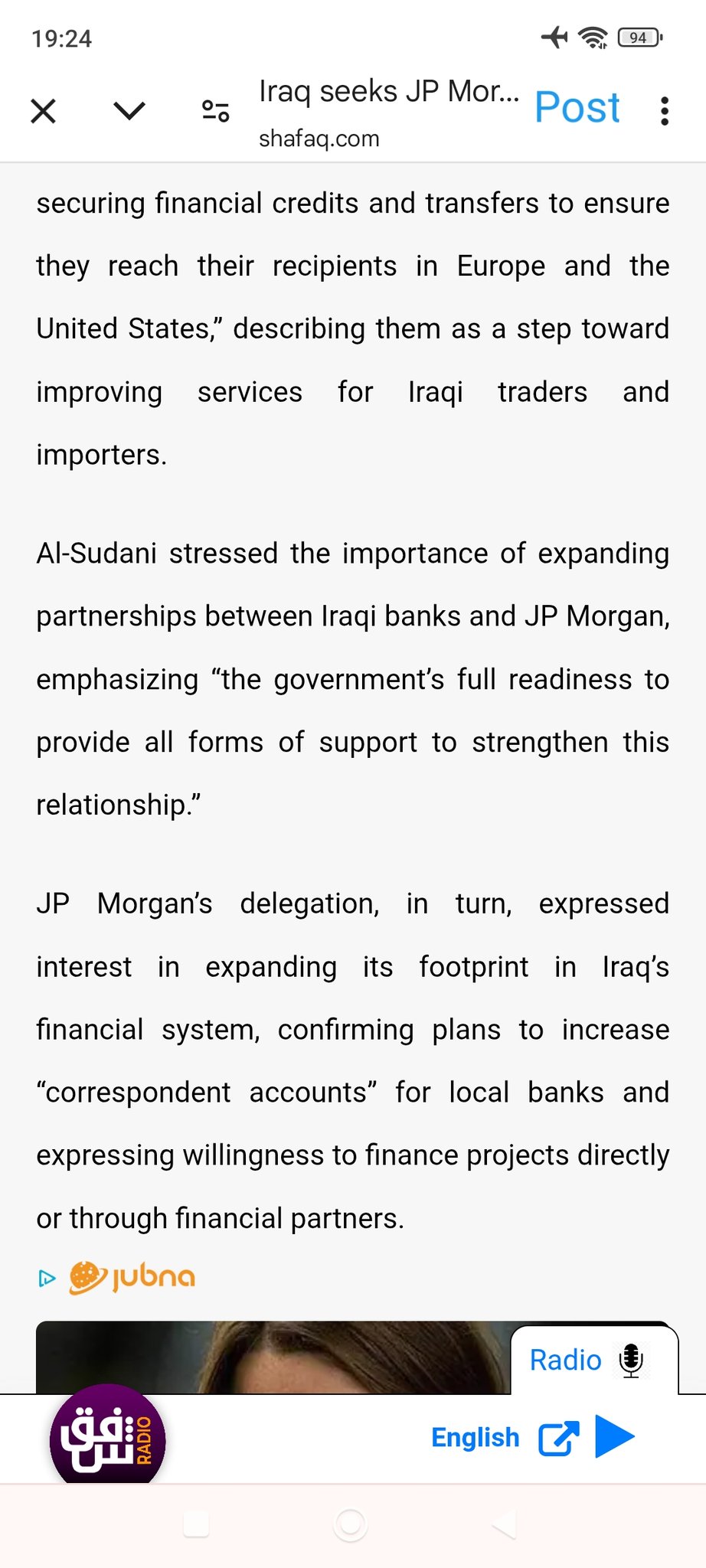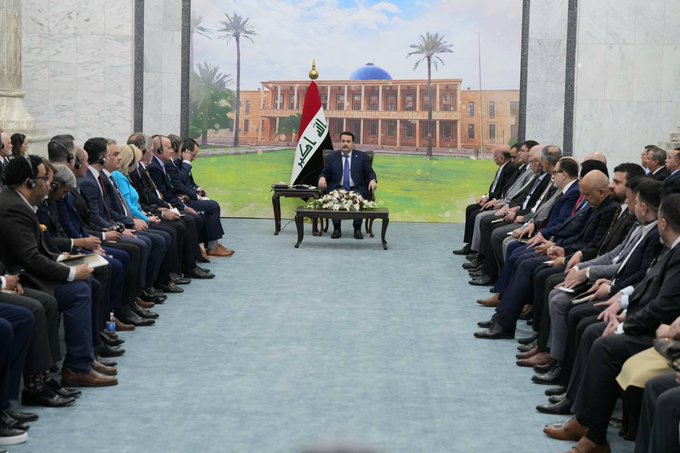THE IMPACT OF NEW US POLICIES ON THE NATIONAL ECONOMY
For two months, the world has been witnessing new economic decisions by the US administration and political, security, and economic tensions. The latest concerns the increase in tariffs on US imports from some countries, particularly the European Union, China, and oil-producing and exporting countries.
Of course, the primary objective of these economic decisions is purely political.
In light of a realistic analysis of international economic, political, and security developments and their expected impact on the Iraqi economy, and with a close eye on the challenges and crises experienced by the national economy, influenced by the economic crises suffered by major economies,
the strategic conflicts between the US, China, European countries, and emerging economies such as India, Brazil, and the BRICS countries, the bias of some countries toward the US strategy to lead the world economically, and other countries toward the strategy of China and some emerging countries to establish a new international economic pole to confront US hegemony. One of the most prominent outcomes of this conflict is the global energy and food crisis, which has persisted for more than a decade and continues to plague countries with weak,
poor, and rentier economies, preventing them from making a structural and comprehensive transition to emerging economies capable of withstanding and overcoming the effects of global economic conflicts. Since mid-June 2014 and the first quarter of 2020, the Iraqi economy has faced complex and cumulative challenges due to changes in the global economy, including the slowdown in global economic growth due to the US-China conflict,
the COVID-19 pandemic, the fight against terrorism, the decline in global oil prices, which reached a decline rate exceeding 70%, and the economic recession. Most countries around the world have been affected by these repercussions, which have had a profound impact on the Iraqi economy. What concerns us is the results of these repercussions and the expected impacts and implications for the economic reality in Iraq in the coming years and until 2030.
In light of the study and analysis, the following can be expected at the level of the global economic system and its implications for Iraq:
First, growth rates in the global economy are expected to decline significantly, affecting the US economy and the economies of the European Union countries, China, and Russia, but at varying rates. Stagflation will prevail in most countries of the world, and this will be reflected in a slowdown in GDP growth by rates ranging between 4-10% in oil-producing and non-oil-producing Arab countries,
especially after the countries of the geographic region faced new challenges due to the Zionist aggression on Gaza and the West Bank. The West, Lebanon, Syria, Yemen, and American threats to Iran have created a new complex situation that will have negative repercussions on the national economy.
Second, the new global economic order we expect to emerge in the coming years will inevitably take shape and will be under the clear economic and financial leadership of the United States, China, and other powers. The Silk Road will be implemented to include the countries through which it was planned to pass, to revive their economies, and it will actually be completed. It is also expected that the path to development will be completed, and Iraq and the countries participating in the project will play a significant role, with positive economic repercussions.
Third, the philosophy of economic management will most likely shift from the capitalist market economy to the social market economy currently adopted as a disciplinary ideology, as in China and some other countries around the world.
These are only early predictions, and the Arab economy will likely be subordinate to the new, larger and more economically powerful pole.
So, what is required of economic decision-makers in Iraq in the face of these developments and changes expected to sweep the world? I see, with a penetrating analytical view of the current economic reality, that we urgently need radical and comprehensive economic change and reform based on the following key pillars:
First: Reshaping the national income resources map by reducing reliance on oil as the primary resource and activating other resources in the coming years to bring them to 30% of the total general budget resources.
Second: Radical and comprehensive change in agricultural, industrial, trade, oil, energy, and water policies by relying on local resources to ensure food and water security, encouraging, protecting, and supporting local production, and developing programs and strategies to protect consumers.
Third: Supporting, developing, and stimulating the private sector, leveraging its capabilities, potential, capital, and investments in building the national economy, and involving it in economic decision-making and economic management.
Fourth: Developing clear strategies for coordination between monetary and fiscal policies, formulating clear financial policies, and re-establishingfoundations for preparing and presenting annual general budgets based on programs, not items. Reducing the budget deficit to the legally specified percentage of GDP, as well as reducing domestic borrowing to a minimum and avoiding any external borrowing.
Fifth: Completing the new methodology adopted by the Central Bank for banking reform and development and digital transformation in all digital fields, with a focus on implementing the Central Bank’s strategy, establishing the financial center, and using artificial intelligence in analyzing, ensuring transparency and accuracy of data for sound economic planning purposes and overcoming the challenges of instability in the financial and monetary systems. This means developing coordinated and balanced plans to overcome the challenges of monetary policy, the challenges of the deficit in non-oil revenue, the deficit in the balance of payments and the trade balance, and the percentage of contribution of productive sectors (the real economy) to the gross domestic product.










